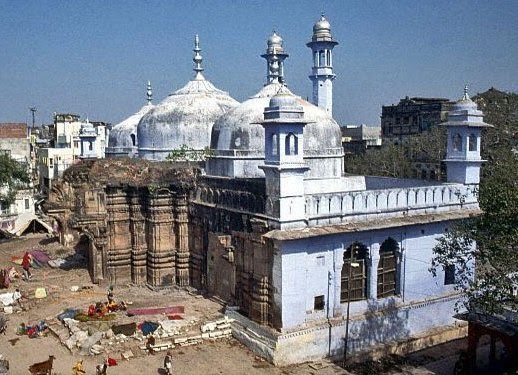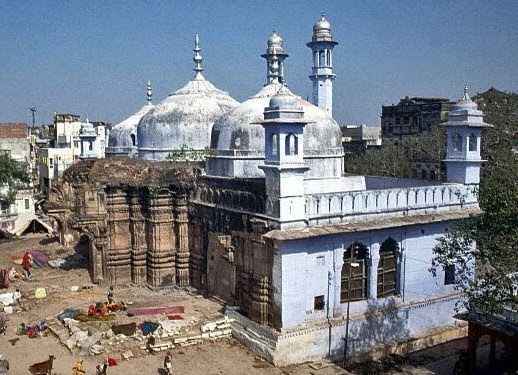Distortions in Indian Historiography

Indeed, one of the symptoms of systematic history distortion has been the refusal to research the facts of the millennium-long oppression of Hinduism.
Distortions in Indian Historiography
The writing of India's history in modern form started under British rule and continued in the first decades of Indian independence. In hindsight we may impute some limitations to it, but it was generally honest and up to the then prevailing international standards. From the 1970s onwards, however, the distortions of the historical record became fundamental, wilful and officially sanctioned, mostly with a distinct ideological motive. This was easily identifiable as anti-Hindu but presented itself as anti-Communal. We need to examine the circumstances behind this shift patronized by Indira Gandhi, her political secretary PN Haksar and her education minister Nurul Hasan. In doing this, we dispose of testimonies by eyewitnesses like SN , Dilip Chakrabarti and Sita Ram Goel, and investigators like Arun Shourie.
Contrary to expectation and rumour, the Narendra Modi government has so far perpetuated this situation, and all talk about "saffronisation" of education is sheer imagination. What is true, on the other hand, is that a far smaller problem of history distortion has subsisted in the margins among Hindu traditionalists, not with official support but with enough decibels to be publicly noticed. The two poles of infringement on conscientious historiography use one another in self-justification.
The Idea of India
Since some three millennia, visible already in the editing of the Mahābhārata, India had an ideal of political unification under a "universal ruler" or Cakravarti. This ideal was best approached in reality by Aśoka Maurya, then the Guptas and Moghuls, and most completely by Queen Victoria. But even in its worst periods of political fragmentation, India had a sense of cultural unity, embodied in the pilgrimage routes and the Sanskrit language. The ancient Greco-Roman or Arab visitors had no problem in recognizing the existence of an entity "India" or "Hind". When the independence of British independence dawned on the horizon, historians in the mould of RC Majumdar emphasized this basic unity.
Against this, the English-speaking elite started propagating the same narrative that the colonialists had fed themselves: that there never was an India except in the atlas, that it was "not more a unity than the equator" (Winston Churchill), and that the colonizers had forged a new country. They called India "a nation in the making", thus flattering Jawaharlal Nehru as a nation-builder, and bombarded an unsuspecting Mahatma Gandhi to "father of the nation'', whereas he had considered himself the humble son of an long-existing nation. Thus, the understanding of India became a major battlefield, still with us today in the writings of a Ramachandra Guha or a Shashi Tharoor. Here it is easy to set the record straight.
Decolonization
Before British colonial rule, West-Asians and Europeans considered India as a distant miraculous country, home of jewels and spices, and of knowledge. It attracted enterprising traders, motivated the journeys of discovery by Christopher Columbus and Vasco da Gama, and was a source of inspiration of writers and philosophers. Even the long centuries of Islamic rule, though they brought oppression and physical destruction, failed to penetrate the native culture and left at least India's overall prosperity (though partly shifted towards the new ruling class) intact. During the 19th and 20th centuries, however, India fell from grace, stooping to the level of a mere colony, being profoundly impoverished and remoulded by its colonizer, moreover remaining a proverbial basket-case even a half-century after formal decolonization.
Following a current trend, we may zoom in on the questions around colonization: was the Islamic conquest a case of colonization? What were its distinctive characteristics vis-à-vis European colonization? Why have these resulted in very different Hindu attitudes toward Christianity and toward Islam? What was the role of Indians in their own colonization? What was cultural colonization, what is cultural decolonization? Which are current forms of subtle neo-colonization?
Muslim Rule
About the period of Muslim rule, which very frequently affirmed its Islamic character and motivation, the main controversy among historians (as well as political ideologues using history) concerns its record vis-à-vis the Hindu population and places of worship. Hindu polemicists bandy about a huge victim toll, citing e.g. historian KS Lal's estimate (1979) of 80 million Hindus disappearing from the demographic figures between 1000 and 1525. The Muslim chronicles themselves boast of a huge victim toll, sometimes no doubt exaggerating but on the other hand leaving many incidents unreported. We can reasonably chart our way amid those data, all while acknowledging that lots of work concerning the tabulation and verification of these data remains to be done. Indeed, one of the symptoms of systematic history distortion has been the refusal to research the facts of the millennium-long oppression of Hinduism.
The record of destroyed temples is at any rate clear enough. Thousands of cases are reported candidly in the Muslim sources; the relatively limited attention in Hindu sources is typical for the pre-Holocaust embarrassment and consequent discreteness over national catastrophes. All over the world and throughout history, people have been reluctant to report on the catastrophes they had suffered, thinking it shameful to be on the losing side. Fortunately for the historians, the conquerors were more forthcoming, not to say boastful about what the modern age has renamed "crimes against humanity". In many cases, part of the destroyed Hindu temple was kept visible in the new mosque built over it, with the purpose of showing off the victory of Islam over Paganism, e.g. the Babri Masjid and the Gyanvapi Masjid built over the Rama Janmabhumi in Ayodhya c.q. the Kashi Vishwanath in Varanasi. We may zoom in on the remarkable and very consequential Ayodhya debate, vivid for decades but recently terminated; and on US historian Richard Eaton's attempt to shift the blame for these Islamic crimes to the Hindu victims themselves.
Another case study is the whitewash given to the Moghul emperor Aurangzeb by a US scholar historian. It fits in with a general approach to Communal conflict pioneered since the 1970s by historians like RS Sharma, Romila Thapar and Irfan Habib. To deconstruct this doctrine of denial, we will first of all endeavour to understand it on its own terms, then to compare it with the data.
Problems on the Dharmic Side
Finally, we should not leave the Infidel side off the hook too easily. There has been a certain laziness in the anti-negationist camp. Yes, the authorities refused to patronize research into communally sensitive topics; but there were ways to organize, for example, an actualization of KS Lal's dramatic figures. There have been individual initiatives, like the excellent publications of Meenakshi Jain or of outsiders to academe such as Sandeep Balakrishna or Aravinda Neelakandam; but the magnitude and importance of this controversy warrants a more systematic endeavour. (Along the same lines, most Hindus participating in the Indo-European Homeland polemic, whether necessitating an "Aryan invasion" or not, have shown themselves smug and ineffective relative to how grimly this issue has become a weapon in the hands of their declared enemies, and how promisingly the argumentative equation has evolved.)
There has also been a marked sloppiness on the Hindu side in construing the historical data of the Islamic oppression of Hinduism. They loosely speak of a "genocide", no less, even of a "Holocaust". There are significant similarities between Holocaust denial and the present denial of Islam's anti-Hindu campaign, which can both be called Negationism, but it doesn't follow that the crimes committed are the same. Diplomatically, this neglect of the differences is risky and may provoke a backlash from other victim groups, who ought to be allies. More importantly for the historian, it may be an inaccurate rendering of the data and certainly of the intention behind the facts, deplorable though these are. Genocide is not just a matter of acts perpetrated but also of the intention behind the acts. Did Islam evince a desire to kill all Hindus, or did it rather formulate a desire to rule the world and thus justify an occasional destruction and killing as instruments to that less genocidal goal?
The anti-Hindu campaigns by certain invaders are the topic of a consequential debate. We intend to encourage research into this subject, and to cleanse the conceptual assumptions behind it.
Cover Image: Creative Commons License
(The cover image is of Gyanvapi Mosque built by destroying a Hindu temple. The partial remains of the Hindu temple are visible under the mosque on one side.)



